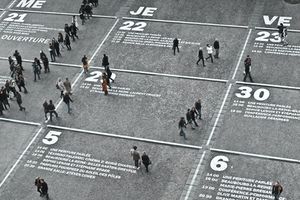Post Covid-19: Outpatient Assessment
Original Editor -Selena Horner
Top Contributors - Selena Horner and Kim Jackson
Prior to Scheduling[edit | edit source]
A few questions may be important to consider prior to scheduling a new patient.
Was the patient hospitalized for COVID-19? If no, when was the onset of symptoms? When was the last day of symptoms? If patient not sure of last day of symptoms, when was the last day of the fever?
If the patient was hospitalized, when was the patient discharged? Where diagnostic tests done to determine if the patient was COVID-19 negative?
Rationale[edit | edit source]
Currently, there are no guidelines on probability of reinfection. It seems the best evidence we currently have focuses on viral loads. The highest level of viral shedding seems to occur when asymptomatic or with mild symptoms. Viral RNA can be found in oral swabs, anal swabs and blood of individuals who are infected with COVID-19.[1] A patient discharged with a negative oral swab may continue to be shedding the virus. The change in shedding may change from predominantly oral to fecal.[1] Prior to treating a patient with post-COVID-19, the physical therapist may need to apply the responses about the patient's timing of COVID-19 in order to be adequately prepared to assist the patient.
For 30% of the hospitalized patients, positive oropharyngeal saliva samples occurred 20 days after onset.[2] In another study using reverse transcription polymerase chain reaction (RT-PCR), positive tests were also found. Patients who had a high severity presentation (respiratory distress, resting oxygen saturation <93% or other significant complications) continued to test positive for 10 or more days post onset.[3] For 90% of patients who were viewed as having mild cases, negative RT-PCR results occurred by day 10 post onset.[3]
The goal of questioning is to estimate the patient's current viral load. It has been documented that an asymptomatic patient has the same viral load as a symptomatic patient.[4]
The science around learning more about reinfection is quite fluid. At the moment there are no definitive answers.
In the United States of America, the Centers for Disease Control and Prevention outlines guidance when no testing has been performed. It is currently believed that if the patient has not had a fever for the last 3 days (and not taking any fever-relieving medications), no longer has any respiratory symptoms (shortness of breath or cough) and it has been at least 7 days since the onset of symptoms, it is no longer recommended to take precautions to limit the spread of the illness.[5]
It seems it may be prudent to determine the risk of transmission based on whether the had mild symptoms (with or without hospitalization) or was hospitalized. If hospitalized and viewed as being severe, the patient may continue to to have viral RNA even 20 days after onset of symptoms. What is not known at this time is whether the viral load is high enough to warrant precautions.
Subjective Patient Intake[edit | edit source]
- Self‐report
- Performance‐based outcome measures
- Region‐specific historical examination
Special Questions[edit | edit source]
- Red Flags
- Yellow Flags
Investigations[edit | edit source]
- Radiological Considerations
Objective[edit | edit source]
Observation[edit | edit source]
- Posture
- Movement Patterns
Functional Tests[edit | edit source]
Palpation[edit | edit source]
- supine
- prone
- seated
Neurologic Assessment[edit | edit source]
Movement Testing[edit | edit source]
- AROM, PROM, and Overpressure
- Passive Intervertebral Motion
- Muscle Strength
Special Tests[edit | edit source]
References[edit | edit source]
- ↑ 1.0 1.1 Zhang W, Du RH, Li B, Zheng XS, Yang XL, Hu B, Wang YY, Xiao GF, Yan B, Shi ZL, Zhou P. Molecular and serological investigation of 2019-nCoV infected patients: implication of multiple shedding routes. Emerging microbes & infections. 2020 Jan 1;9(1):386-9.
- ↑ To KK, Tsang OT, Leung WS, Tam AR, Wu TC, Lung DC, Yip CC, Cai JP, Chan JM, Chik TS, Lau DP. Temporal profiles of viral load in posterior oropharyngeal saliva samples and serum antibody responses during infection by SARS-CoV-2: an observational cohort study. The Lancet Infectious Diseases. 2020 Mar 23.
- ↑ 3.0 3.1 Liu Y, Yan LM, Wan L, Xiang TX, Le A, Liu JM, Peiris M, Poon LL, Zhang W. Viral dynamics in mild and severe cases of COVID-19. The Lancet Infectious Diseases. 2020 Mar 19.
- ↑ Zou L, Ruan F, Huang M, Liang L, Huang H, Hong Z, Yu J, Kang M, Song Y, Xia J, Guo Q. SARS-CoV-2 viral load in upper respiratory specimens of infected patients. New England Journal of Medicine. 2020 Mar 19;382(12):1177-9.
- ↑ Centers for Disease Control and Prevention. Discontinuation of Transmission-Based Precautions and Disposition of Patients with COVID-19 in Healthcare Settings (Interim Guidance). Available from: https://www.cdc.gov/coronavirus/2019-ncov/hcp/disposition-hospitalized-patients.html [Accessed 4 April 2020].







